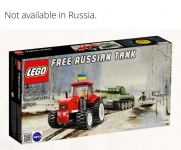- Reaction score
- 0
- Points
- 210
Colin P said:We were able to support multiple fleets before computer based supply systems. I hear this argument again and again. If your supply chain is that broken, take it out back and shoot it because it's a lame duck. Using your argument, every trip with the big wrecker is wear and tear on an assets that will be in short supply and difficult to replace, better to use it for field and exercise work and use civilian pattern trucks to do the mundane stuff.
Logistics is a fact of life, computers or not, ask Hitler or Napoleon. So we have to balance capabilities with the need to support the fleet. Taking logistics into account doesn't mean the supply system is broken, it means we need to streamline our effort. I already take a small sea can village just to support an Inf Bn, I would prefer to not take more if we can properly plan in the procurement phase.


